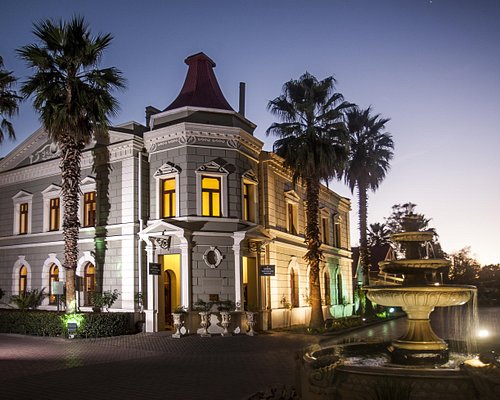Johannesburg North Attractions - Truths
Johannesburg North Attractions - Truths
Blog Article
A Biased View of Johannesburg North Attractions
Table of ContentsHow Johannesburg North Attractions can Save You Time, Stress, and Money.Johannesburg North Attractions Fundamentals ExplainedExcitement About Johannesburg North AttractionsThe Best Guide To Johannesburg North AttractionsThe 9-Second Trick For Johannesburg North AttractionsJohannesburg North Attractions for Beginners
The city owes its area to the existence of a a lot more valuable resource: gold. The city grew on the edge of the Witwatersrand Key Reef, a below ground stratum of gold-bearing quartz-silica corporation that arcs for numerous miles below the Highveld. The majority of the gold mines in the city ceased procedure in the 1970s, but in its day the Witwatersrand gold market accounted for even more than 40 percent of the world's yearly gold production.Johannesburg has a warm environment. The city enjoys about 8 hours of sunlight per day in both wintertime and summer season.
What rain the city receives falls virtually exclusively in the summertime months, usually in spectacular late-afternoon electrical tornados. Air air pollution presents a significant trouble, especially in the winter season, when thermal inversions hinder the westward flow of air from the Indian Sea. Pollution is most serious in the largely resolved Black towns on the city's perimeter, where lots of locals still count on coal for gas.

Johannesburg North Attractions - An Overview
The equilibrium of the city is inhabited by whites. Holiday accommodation varies in character and top quality. Soweto is infamous for its unlimited rows of municipally built, two-room matchbox homes, yet it additionally has a couple of thriving territories in addition to bursting squatter camps, where 10s of thousands live without water, electrical power, or hygiene centers.
Physical development, although rather restricted by transportation, proceeded quickly as migration to South Africa, and Johannesburg specifically, boosted considerably. This trouble was resolved in the 1930s when the car was introduced in mass production to South Africa. Autos were, essentially, confined to the affluent, and allowed them to transfer to the north of the city and commute into the centre.
Many bad suburban areas were mixed, click with inadequate blacks and whites living together, although the affluent suburban areas were usually reserved for whites. This altered with the election of the National Party in the 1948 political elections, that began to formalise the system called discrimination. Discrimination officially designated which suburban areas each race might live in under the Group Locations Act.
The previous system of eleven numbered regions was reorganised in 2006. Marshalltown, as seen from the top of the Carlton Centre. The M1 and M2 run behind the buildings, and the southern suburban areas expand past the highway border. The central city of Johannesburg is situated within the city's Area F. The number of people living in the inner city on a casual basis is unknown, as lots of are illegal immigrants. The joblessness, education, and age profiles of the area are all unidentified, due to the trouble of obtaining reputable info concerning the area.
Johannesburg North Attractions Things To Know Before You Get This
Yeoville and Bellevue have a mix of apartment and single property units on small great deals. The region is situated on a hilly divide that runs hop over to here from eastern to west. The most obvious geographical attribute is Observatory Ridge, which is named for the large observatory situated on it. The leisure rooms are no longer utilized, as a result of protection problems.

How Johannesburg North Attractions can Save You Time, Stress, and Money.
The eastern suburban areas are some of the oldest areas of Johannesburg, there are big neighborhoods of Jewish and various other European backgrounds, the bulk of the populace is English speaking. There are three golf courses as well as a number of secured ridges with viewsites.
Originally built to house male migrant workers, lots of have been enhanced as houses for couples and households. The suburb was not historically enabled to create work centres within the location, so virtually all of its homeowners are travelers to various more other parts of the city.
The Ultimate Guide To Johannesburg North Attractions
The N1 Western Bypass attaches the northern residential areas with the north-western suburban areas. The household locations in the north residential areas are generally official, without substantial areas of informal housing, or housing that does not have a long-term structure. Although this is a recognized location, there is a fad of land use modification from property to industrial, particularly along main arterial roadways and around recognized nodes.
The location is well attached to road networks, particularly along the north-south axis created by the M1 and N1. Roadways to the east and west are much less well created, as there are no highways taking a trip in that instructions. In the direction of the northern boundary of the city, the thickness of development reduces, leaving huge areas of primitive land around Midrand.
Rumored Buzz on Johannesburg North Attractions
The initial suburb to the north of the central city is Parktown, which is situated on a hillside neglecting the internal city and Hillbrow. It has several well-off locals and Edwardian-style manors, along with the Education and Medical schools of the College of the Witwatersrand. The big concrete Charlotte Maxeke Johannesburg Academic Health Center dominates the sky line of Parktown.
Report this page